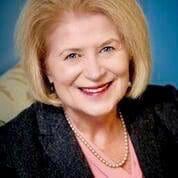Search Posts
Recent Posts
- Rhode Island Weather for June 1, 2025 – Jack Donnelly June 1, 2025
- To Do in RI: 26th Annual Rose Show of the Rhode Island Rose Society June 1, 2025
- Victory is ours: Victory gardens are blossoming again – Chuck Norris June 1, 2025
- Ask Chef Walter: The problem with “The Best” – Chef Walter Potenza June 1, 2025
- Gimme’ Shelter: Kava is waiting at the Providence Animal Control Center June 1, 2025
Categories
Subscribe!
Thanks for subscribing! Please check your email for further instructions.

Rethink, reinvigorate, react and reinvent
How Cultural Agility and Innovation Helped Save a Company in the Global Marketplace
By Mary T. O’Sullivan, MSOL
Success today requires the agility and drive to constantly rethink, reinvigorate, react and reinvent” – Bill Gates
A successful auto parts designer and manufacturer, Megatech, witnessed a major threat to its market share when faced with newly dissolving trade boundaries. In order to survive the new market conditions as well as succeed, the organization required an agile change of corporate culture. By strategically realigning from an internally focused, process-oriented culture to organizing by key project allowed the company to quickly address its weaknesses and develop its strengths. For instance, MegaTech comfortably earned high profits by churning out old designs, while gaining bottom line growth not through innovation but by improving efficiencies in existing internal processes. Introducing new designs and new technologies with the shortened life cycles and narrow product launch windows the market demanded, required a corporate infrastructure or “systems” capable of integrating the new corporate strategy and satisfying customer requirements.
Furthermore, each product line had the benefit of a “special project team” tasked with a mandate to maintain the same level of market competitiveness as prior to the reorganization. Additionally, while pursuing the top line growth efforts, product development project teams had specific cost and schedule performance indices (CPI and SPI) imposed in order to maintain the existing bottom line growth through efficiencies. Monitoring CPI/SPIs also required cross-functional support, a key characteristic of a collaborative project team. While employees may still be in various stages of engagement, and management admits “it’s certainly not a magic pill for success but it has started us thinking about how we operate”, the company’s new organizational structure demonstrates its efforts to achieve project management maturity goals. (Pinto, 2010)
MegaTech faced a new “unpredictable environment”, with disappearing trade boundaries triggered by the introduction of NFTA, and other international trade agreements, heralding the emergence of global competition as well as global markets. In addition, the new competitors were more customer focused – concerned with client acceptance – and quicker to market with innovative products, with the market demanding shortened product life cycles, narrow product launch windows, as well as increasingly complex and technical products. All these forces combined to compel MegaTech to become more market savvy in a short period of time. Their existing process-oriented organization was not agile enough to support the new market conditions, and each product line was reorganized into project teams to support the innovative changes needed. (Pinto, 2010) Management worked with what they had to offset its known lack of agility by reorganizing into business units that could meet the quickly changing market conditions and survive global competition.
Pinto, J. K. (2010). Project Management, second edition. Boston: Prentice Hall.
_____

Mary T. O’Sullivan, Master of Science, Organizational Leadership, International Coaching Federation Professional Certified Coach, Society of Human Resource Management, “Senior Certified Professional. Graduate Certificate in Executive and Professional Career Coaching, University of Texas at Dallas.
Member, Beta Gamma Sigma, the International Honor Society.
Advanced Studies in Education from Montclair University, SUNY Oswego and Syracuse University.
Mary is also a certified Six Sigma Specialist, Contract Specialist, IPT Leader and holds a Certificate in Essentials of Human Resource Management from SHRM.
